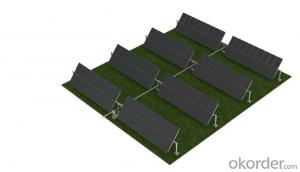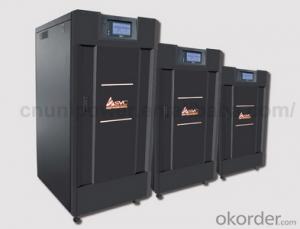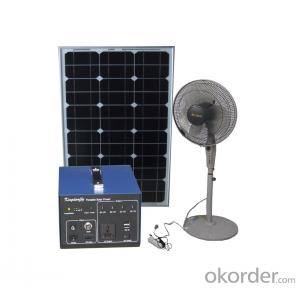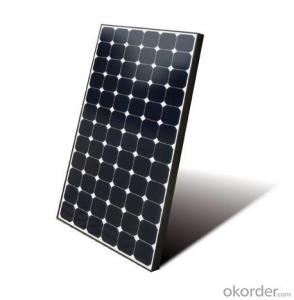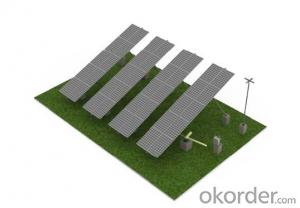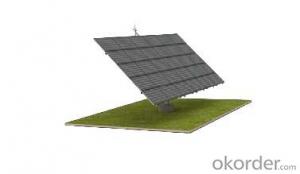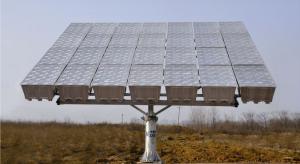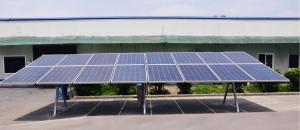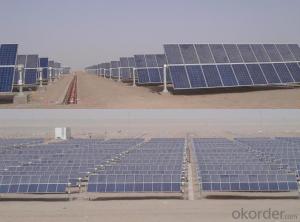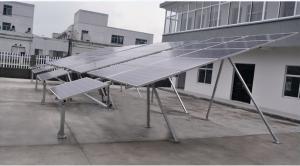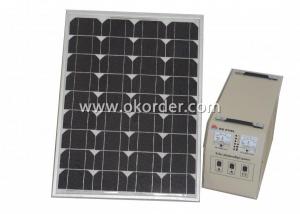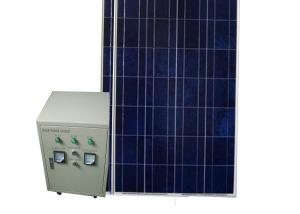Lux Solar Energy Systems Horizontal Single Axis Tracking System Solar Mounting System
- Loading Port:
- China Main Port
- Payment Terms:
- TT OR LC
- Min Order Qty:
- -
- Supply Capability:
- -
OKorder Service Pledge
OKorder Financial Service
You Might Also Like
Packaging & Delivery
Packaging Detail:Normal package seaworthy
Delivery Detail:15 days
Specifications
Easy installation Competitive price TUV&SGS test report & CSA certification 15-warranty
Specifications
1) Super smooth beautiful appearance,outstanding quality,large supply.
2) Available in customized surface finishes.
3) Well machined,for example,cutting,drilling and milling with excellent tolerance.
4) Meet with customer’s designs and supply you best price.
5)Usages:Supply for solar panel modules.
Technical characteristics
Installation site:
ground,hillside,and grassland
Installation angle
it is based on customers’ requirements
Installation height
it is basedon customers’ requirements
Solar panel type; with or without frame
Components arrangement :horizontal or vertical
Support track
aluminum alloy extrusion
Quality warranty
15 years
Advantages
1)Quick installation: with high degree of pre-installed rate, the system could be easily installed by using galvanized carbon steel rails for PV Stent, and specially designed connection parts of the PV bracket, which could reduce installation time and cost greatly.
2)Offer unmatched durability: with all structural components comprised of high class stainless steel and anodized aluminum alloy, it is designed for 25 years service life and backed by 15 years warranty.
3)Stand up to extreme weather: The SuninTek solar mount is designed to stand up to the extreme weather complied with the AS/NZ 1170 and other international structure load standard by the skilled engineer. The main support components also have been tested to guarantee its structure and load-carrying capacity.
4)Provide broad installation flexibility: These systems accommodate most commercially available framed solar panels , and they can scale easily from small to large, multi-megawatt installations.
5)Diversified Application: The PV mounting system produced can be adopted by various types of PV cells panels which you can find in the market. It can serve for both mini solar power system and huge plant with megawatt capability.
Main features
1. Installation cost savings.
2. Save installation time.
3. Increase the mechanical strength of solar energy mounting to ensure that wind requirements.
4. The outdoor for installation of solar energy.
5. Length can be customized according to customers.
6. Service life of up to 25 years.
7. Products through the international certification.
8. Stent material composition of the galvanized steel and aluminum.
9. 15 years system and structural guarantee.
10.Flexible post spacing withstands different wind & snow loads.
11. High quality material in Aluminium 6005-T5 and SUS 304.
12.Screws and nuts go with every components needed.
13.Mechanical calculation and reliability tested to ensure highest product quality.
- Q: Can solar energy systems be used in areas with strict building codes?
- Yes, solar energy systems can be used in areas with strict building codes. While building codes may impose certain limitations or requirements on the installation and design of solar energy systems, there are various ways to comply with these regulations. For instance, the design can be adapted to meet aesthetic and structural requirements, and permits can be obtained to ensure compliance with safety and building standards. Additionally, many jurisdictions have incorporated provisions that facilitate the installation of solar energy systems, recognizing their environmental and energy-saving benefits. Overall, with proper planning, consultation with local authorities, and adherence to building codes, solar energy systems can be successfully implemented in areas with strict regulations.
- Q: Can a solar energy system be used in areas prone to earthquakes?
- Yes, a solar energy system can be used in areas prone to earthquakes. Solar panels are designed to withstand various environmental conditions, including seismic activity. The mounting systems used for solar panels are typically engineered to meet specific building codes and standards, ensuring they can withstand earthquakes. Additionally, solar panels do not require any moving parts, making them less susceptible to damage during seismic events. However, it is important to note that the installation and design of the solar energy system should adhere to local regulations and building codes to ensure that it can withstand earthquakes effectively.
- Q: Do solar energy systems require grounding?
- Yes, solar energy systems do require grounding for several reasons. Firstly, grounding helps to protect the system and its components from electrical faults, lightning strikes, and power surges by providing a safe path for excess electrical energy to dissipate into the ground. Additionally, grounding helps to minimize the risk of electric shock for individuals who may come into contact with the system. Overall, proper grounding is essential for the safe and efficient operation of solar energy systems.
- Q: Can solar energy systems be used in areas with limited access to backup systems?
- Yes, solar energy systems can be used in areas with limited access to backup systems. Solar energy systems are capable of generating electricity even without a backup system, as they harness the power of the sun to produce energy. This makes them a reliable and sustainable solution for areas with limited access to backup systems or unreliable grid infrastructure. However, it's important to consider factors such as system sizing, energy storage options, and energy management strategies to ensure sufficient power availability during periods of limited sunlight or high demand.
- Q: Can solar energy systems be used for powering electric vehicle research and development centers?
- Yes, solar energy systems can be used for powering electric vehicle research and development centers. Solar energy is a renewable and clean source of energy that can help reduce the carbon footprint of these centers. By installing solar panels on the rooftops or open spaces around the centers, the solar energy can be harnessed and converted into electricity to power various operations and activities. This will not only provide a sustainable energy source but also reduce the dependency on conventional electricity and fossil fuels. Additionally, using solar energy can also help in cost savings in the long run, as the initial investment in solar panels can be offset by the reduced electricity bills. Overall, solar energy systems are a viable and environmentally friendly option for powering electric vehicle research and development centers.
- Q: Are solar energy systems noisy?
- No, solar energy systems are not noisy. They operate silently as they convert sunlight into electricity without any moving parts or mechanical components.
- Q: What is the role of monitoring systems in a solar energy system?
- The role of monitoring systems in a solar energy system is to gather and analyze data related to the performance and efficiency of the system. These systems play a crucial role in ensuring that the solar energy system is functioning optimally, and any potential issues or inefficiencies are identified and addressed promptly. Monitoring systems typically include sensors and meters that measure various parameters such as solar radiation, energy production, temperature, and voltage. This data is collected in real-time and can be accessed remotely, allowing system owners, operators, and maintenance personnel to monitor the system's performance from anywhere. By collecting and analyzing this data, monitoring systems provide valuable insights into the overall health and functionality of the solar energy system. They can detect and alert users about any malfunctions, such as faulty panels, inverters, or wiring, enabling prompt maintenance or repairs. This proactive approach helps minimize downtime and maximize energy production, ensuring the system operates at its full potential. Furthermore, monitoring systems also help in optimizing the energy output of the solar system. By tracking energy production and consumption patterns, they can identify opportunities for improvement, such as adjusting the tilt or orientation of the panels, optimizing the battery storage, or even implementing energy-saving measures. These insights allow system owners to make informed decisions to enhance the overall efficiency and performance of the solar energy system. In addition to system performance tracking, monitoring systems also provide valuable financial and environmental benefits. They can calculate and display real-time energy production, enabling system owners to monitor their energy savings and financial returns. This information is crucial for assessing the system's payback period and determining the return on investment. Moreover, monitoring systems enable the identification of any inconsistencies or deviations from expected energy production, which can indicate potential issues such as shading or dirt accumulation on the panels. By addressing these issues promptly, system owners can maintain the system's efficiency, prolong its lifespan, and reduce maintenance costs. Overall, monitoring systems are an integral part of solar energy systems, providing real-time data and insights that help optimize performance, detect and address issues promptly, maximize energy production, and ensure a strong return on investment.
- Q: Can solar energy systems be used for powering electric drone systems?
- Yes, solar energy systems can be used to power electric drone systems. Solar panels can be integrated onto the drone's structure, allowing them to capture sunlight and convert it into electrical energy to power the drone's propulsion system and other onboard electronics. This renewable energy source offers a sustainable and environmentally friendly alternative to traditional battery-powered drones, enabling longer flight times and reducing the reliance on non-renewable energy sources.
- Q: Can solar energy systems be used for powering remote weather stations?
- Yes, solar energy systems can be used for powering remote weather stations. Solar panels can be installed at these stations to capture sunlight and convert it into electricity, providing a sustainable and reliable power source for the station's operations. This eliminates the need for traditional electricity sources or frequent battery replacements, making solar energy an ideal solution for remote locations.
- Q: I usually have to use about 10 degrees, more in the summer! Winter sunshine time 10 hours! Who knows how much a set price, what brand?
- General installation 3000W on the line, a full set of system down 21 thousand yuan. Print-Rite used solar panels, inverter with crystal fuyuan. Guilin Jinyang PV is so safe.
Send your message to us
Lux Solar Energy Systems Horizontal Single Axis Tracking System Solar Mounting System
- Loading Port:
- China Main Port
- Payment Terms:
- TT OR LC
- Min Order Qty:
- -
- Supply Capability:
- -
OKorder Service Pledge
OKorder Financial Service
Similar products
Hot products
Hot Searches
Related keywords
